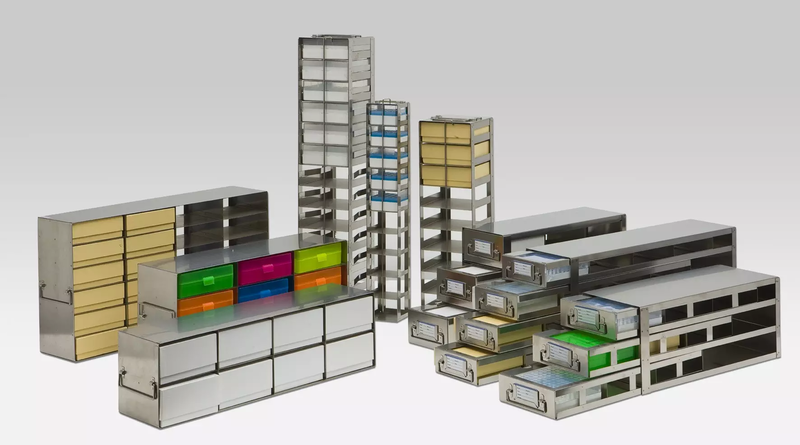How to Manage Your Cryogenic Storage
July 26 2016 /
Cryogenic freezing is a process of cold preservation that is accomplished with very low temperatures. We’re talking a bone-chilling -238° F or -150° C. The storage method is derived from the science of cryogenics, which is about creating very cold environments and studying what the results are for samples that experience extremely low temperatures.
Creating the low temps that cause cryogenic temperatures in the first place is not anything like turning down the dial in your home freezer. It usually requires liquefied gases, like helium or nitrogen. Just getting these gases to a liquid state makes extremely cold temperatures necessary, so once they are liquid, they can cause very low temperatures as well. Cryogenics are employed in laboratories to establish very cold temps for conducting certain experiments. (Note: Cryogenics should not be confused with cryonics, which is the science of freezing a body in hopes of reviving it in the future.)
Just as the actual creation of an extremely low temperature
environment has its challenges, similarly cryogenic storage can be a tricky
business. Avoiding damage to samples in cryogenic freezers is of utmost
importance and the type of storage that is utilized can make all the
difference. Here are some of the best options in cryogenic storage out
there—they are a real cool mad-scientist mix:
1) The CoolCube™ Cooler
The CoolCube™ is the stuff of superhero fantasies. Store the cube in the cryogenic freezer overnight, and it will stay at 0° C for up to four hours after removal from the freezer. This allows you to keep samples on the lab bench without worrying about the sample degradation that occurs with fluctuation or increases in temperature. The real beauty and genius of the cube is that it keeps samples cold without freezing them.
2) Cryogenic Vials
It’s hard to imagine cryogenic experiments without cryovials. Used for storage in
the gas phase of liquid nitrogen, they have a special screw cap that has
a silicone washer for a secure seal, and a star-shaped upright design on the
bottom of the tube so the vials can stand on their own.
3) Icewares
When you are trying to transport or store your samples, icewares are your answer. From ice buckets to ice pans in various sizes, they can come tricked out with rectangular or circular floating racks for storing microcentrifuge tubes on dry ice or just plain old arranging your cryovials right in the bucket of dry ice. Interestingly, ice buckets and pans can store hot or cold items.
4) Cardboard Freezer Boxes
Cardboard cryo-freezer boxes are the workhorse of the cryogenic storage world. Protected from liquid nitrogen or condensation from freezers with a moisture-repellent coating, they are made of a sturdy white cardboard and generally fit all standard freezers. These clever boxes have gridded inserts for holding vials and small holes on the bottom for safe drainage of liquid nitrogen or water.
5) Polypropylene Freezer Boxes
Colorful polypropylene boxes not only brighten up your freezer, they also can withstand temps to -80°C. They have numbered tube wells, and are autoclavable for sterilization. They are usually available with a hinged or friction lid—your choice.
6) Stainless Steel Freezer Racks
Stainless steel freezer storage racks are fabricated from corrosion-resistant steel, allowing them to withstand the extremely low temperatures of cryogenic freezing. Look for racks with handles at both ends to accommodate a left- or right-opening freezer. They should fit standard ultra low temp freezers and be equipped with security locks.
The wide variety of cryogenic storage solutions definitely makes handling your sample without fear of damage or degradation easier. Next Day Science has a full range of the latest in cryogenic storage products.
